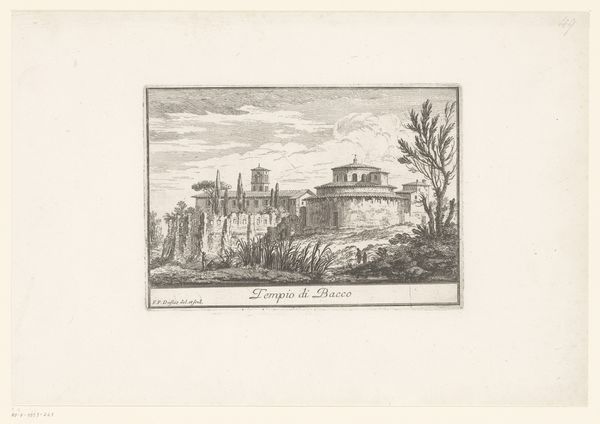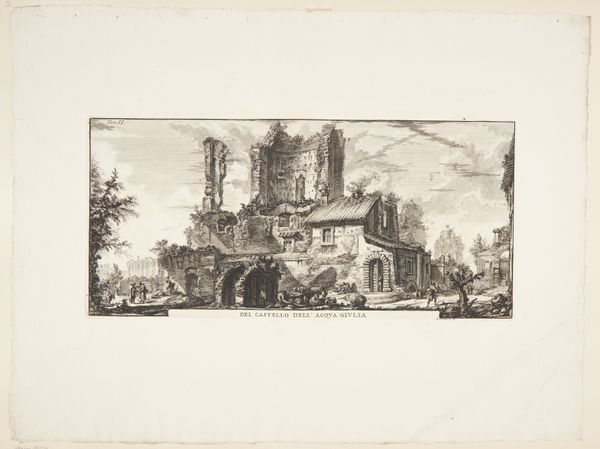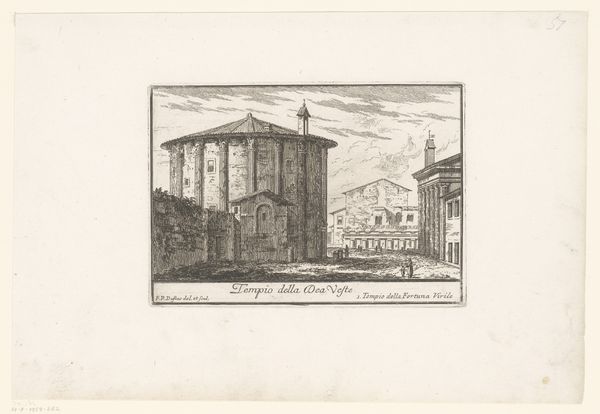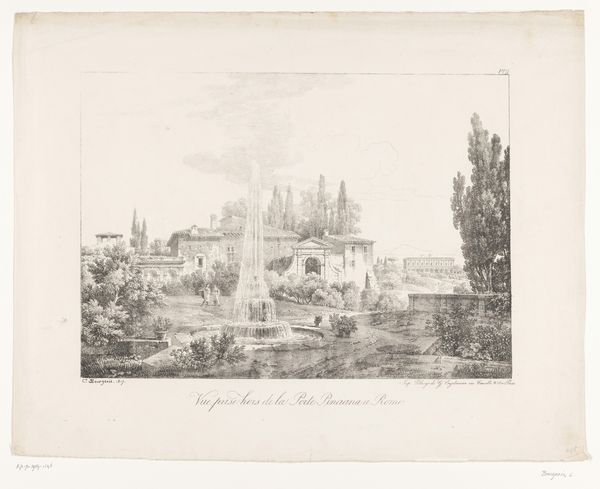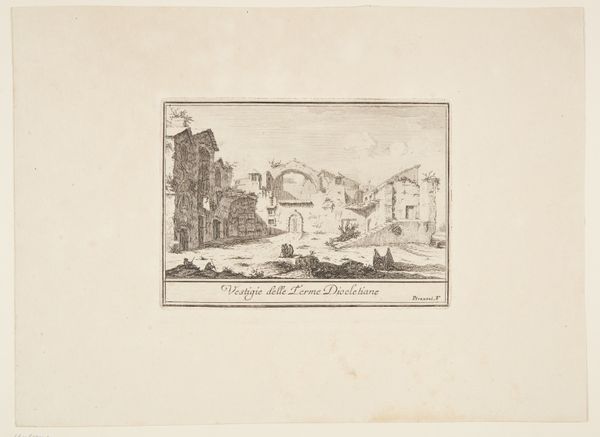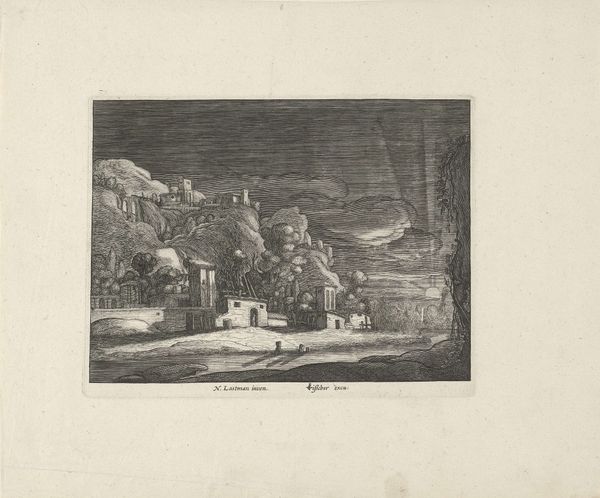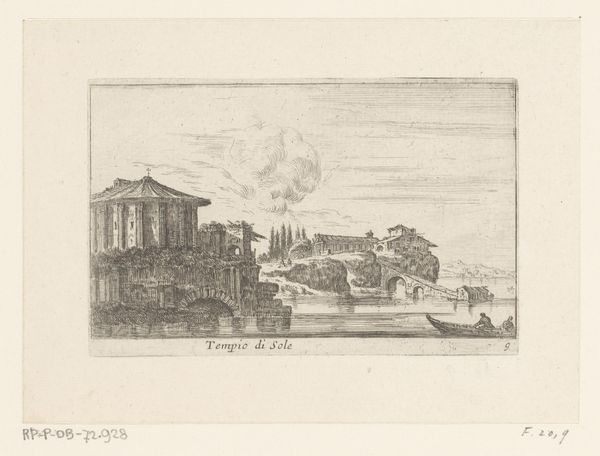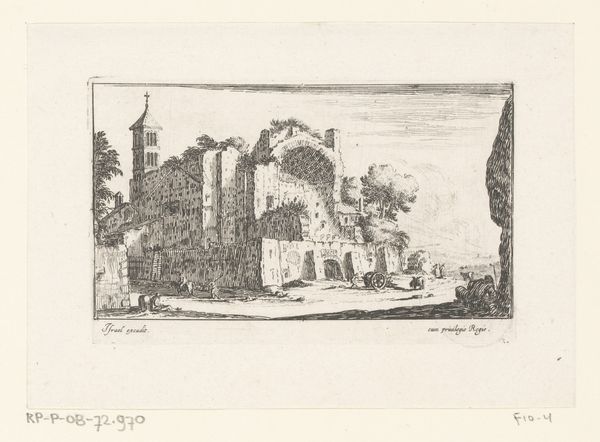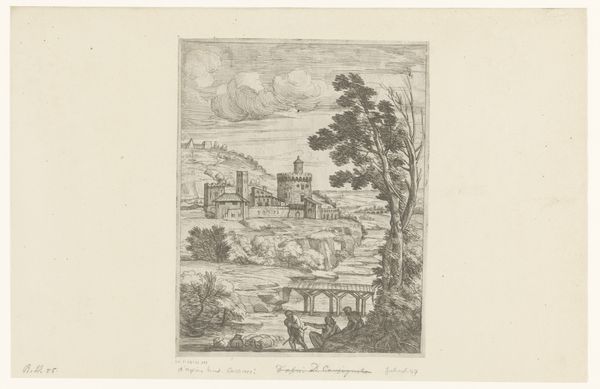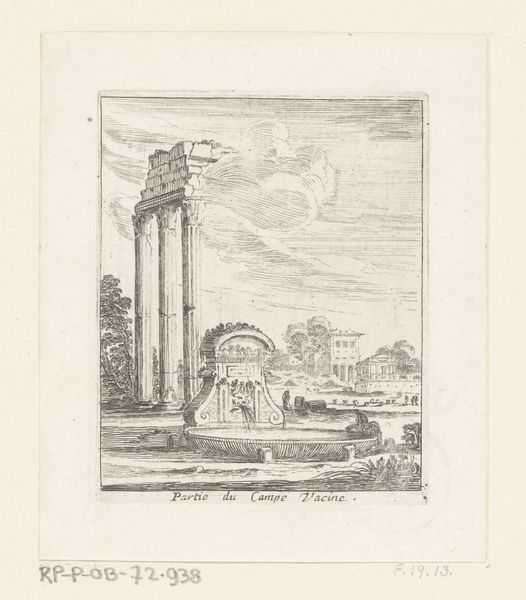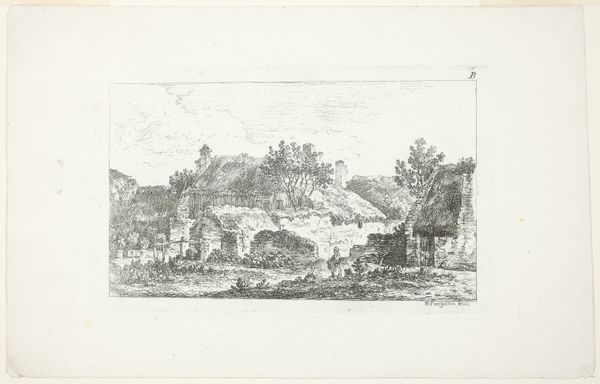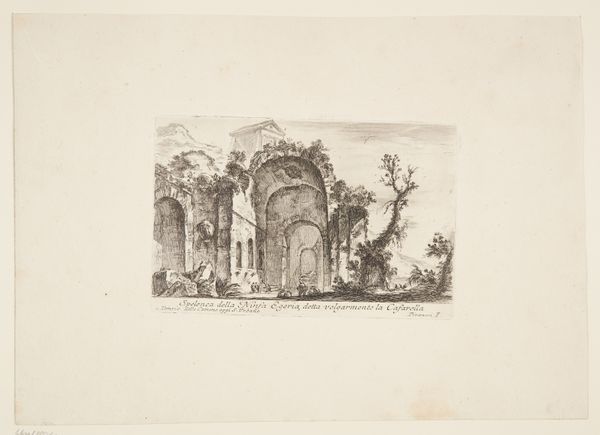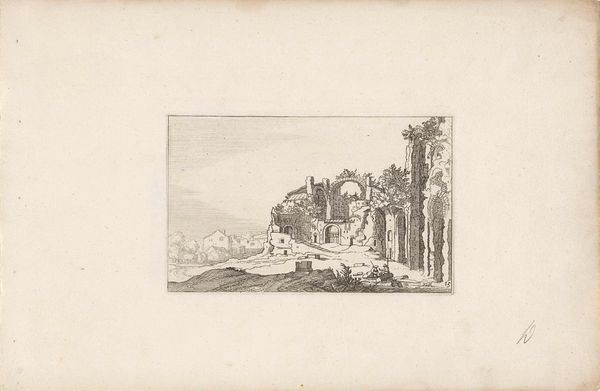
print, engraving
#
neoclassicism
# print
#
landscape
#
classical-realism
#
engraving
Dimensions: height 131 mm, width 184 mm
Copyright: Rijks Museum: Open Domain
Curator: There’s a stillness to this landscape, an almost dreamlike quality, despite the architectural precision. Editor: Precisely! What we're looking at here is an engraving entitled "View of the Temple of Romulus," crafted around 1748 by Philothée François Duflos. Curator: Romulus…the founder of Rome! So, instantly, it conjures these images of emperors and senate debates... I find it’s really about light. Note the dark foreground versus the almost luminous quality of the sky. How does that interplay speak to its context? Editor: The play of light and shadow, or chiaroscuro, creates a dialogue between decay and idealization typical of neoclassicism. Duflos meticulously details each structure, emphasizing form and proportion—key elements of classicism resurrected during this period. Consider how the receding cypresses, almost like exclamation points, structure the pictorial space... It is designed for learned eyes trained in aesthetics. Curator: But the Romulus connection is a bit tongue-in-cheek, isn’t it? I feel there is also nostalgia at work! Like imagining history instead of experiencing it, the kind of sweet melancholy you’d get writing poetry at sunset with a glass of chianti… Editor: That romantic reading is perfectly understandable. What strikes me, however, is how the composition orchestrates an encounter between nature and civilization. The trees, strategically placed, not only frame the architectural forms but become integral parts of the visual syntax. Curator: Syntax indeed. So this piece, though historical, acts almost like a blank canvas. Each viewer bringing his own idea of grandeur and decay... or perhaps a longing for a heroic past. It makes the classical period somehow accessible. Editor: Perhaps the true art of Duflos lies in distilling such complex meanings within seemingly simple linear contours. What remains timeless is this negotiation, a silent tension forever caught in the meticulous lines of an engraving.
Comments
No comments
Be the first to comment and join the conversation on the ultimate creative platform.
